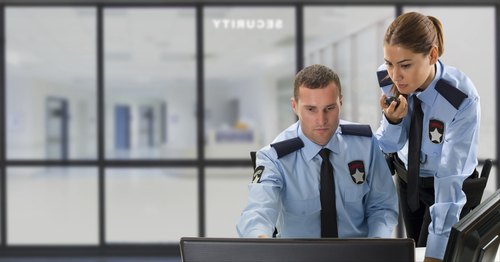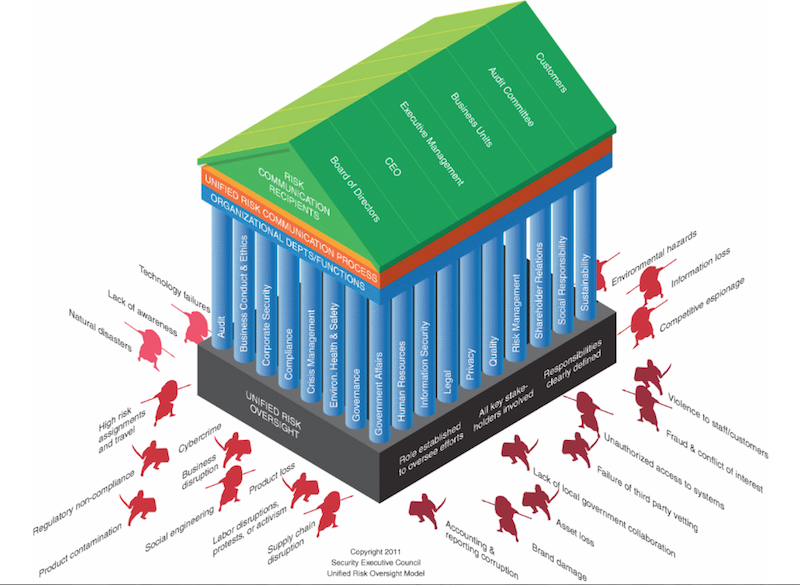A Plan for Corporate Security Excellence: Protecting Your Business
A Plan for Corporate Security Excellence: Protecting Your Business
Blog Article
From Cybersecurity to Physical Steps: Strengthening Corporate Protection in an Altering Globe
In today's rapidly developing digital landscape, the importance of corporate safety and security can not be overemphasized. As cyber threats come to be common and increasingly sophisticated, organizations must go beyond typical cybersecurity measures to safeguard their properties and operations - corporate security. This is where the integration of physical safety steps comes to be important. By combining the toughness of both cybersecurity and physical protection, companies can produce an extensive defense strategy that deals with the varied series of dangers they deal with. In this conversation, we will check out the transforming threat landscape, the demand to incorporate cybersecurity and physical security, the implementation of multi-factor verification procedures, the importance of staff member understanding and training, and the adjustment of safety procedures for remote labor forces. By analyzing these crucial locations, we will certainly get valuable insights right into exactly how organizations can reinforce their corporate protection in an ever-changing world.
Recognizing the Changing Threat Landscape
The progressing nature of the modern-day globe demands a thorough understanding of the transforming threat landscape for efficient corporate safety. In today's interconnected and digital age, threats to business protection have ended up being a lot more intricate and innovative. As technology advancements and services end up being progressively reliant on digital framework, the potential for cyberattacks, data breaches, and other safety and security breaches has substantially raised. It is vital for companies to stay notified and adapt their safety measures to resolve these advancing risks.
One key element of comprehending the altering threat landscape is acknowledging the various sorts of risks that organizations encounter. Cybercriminals are regularly developing new strategies to manipulate susceptabilities in computer systems and networks. These risks can vary from malware and ransomware strikes to phishing scams and social design methods. Furthermore, physical dangers such as burglary, criminal damage, and company espionage stay widespread issues for organizations.
Tracking and examining the hazard landscape is necessary in order to identify potential risks and susceptabilities. This involves staying upgraded on the most recent cybersecurity trends, assessing danger knowledge reports, and conducting routine threat evaluations. By recognizing the transforming risk landscape, organizations can proactively execute appropriate safety and security steps to reduce threats and secure their assets, credibility, and stakeholders.
Integrating Cybersecurity and Physical Security
Integrating cybersecurity and physical security is critical for comprehensive business defense in today's electronic and interconnected landscape. As organizations increasingly count on innovation and interconnected systems, the borders in between physical and cyber hazards are coming to be blurred. To efficiently protect against these threats, an alternative technique that integrates both cybersecurity and physical safety procedures is essential.
Cybersecurity concentrates on shielding digital assets, such as networks, information, and systems, from unapproved gain access to, interruption, and theft. Physical safety, on the various other hand, includes procedures to protect physical possessions, people, and facilities from risks and susceptabilities. By incorporating these two domains, companies can deal with vulnerabilities and risks from both electronic and physical angles, consequently improving their general safety posture.
The combination of these two disciplines enables an extra thorough understanding of security threats and enables a unified reaction to events. For instance, physical access controls can be improved by incorporating them with cybersecurity protocols, such as two-factor verification or biometric identification. Likewise, cybersecurity steps can be matched by physical safety and security steps, such as monitoring cams, alarm systems, and safe and secure gain access to points.

Executing Multi-Factor Verification Steps
As organizations progressively prioritize extensive safety and security measures, one reliable approach is the implementation of multi-factor verification steps. Multi-factor verification (MFA) is a protection technique that needs individuals to supply several forms of identification to access a system or application. This strategy includes an added layer of security by incorporating something the customer knows, such as a password, with something they have, like a security or a finger print token.
By implementing MFA, organizations can significantly improve their safety and security posture - corporate security. Standard password-based authentication has its restrictions, as passwords can be conveniently endangered or failed to remember. MFA minimizes these threats by adding an additional verification variable, making it harder for unapproved people to access to sensitive information
There are numerous kinds of multi-factor authentication approaches available, consisting of biometric authentication, SMS-based verification codes, and hardware tokens. Organizations need to assess their certain demands and choose the most appropriate MFA option for their requirements.
However, the implementation of MFA ought to be thoroughly planned and carried out. It is crucial to strike an equilibrium between security and usability to stop individual irritation and resistance. Organizations needs to also consider potential compatibility problems and provide appropriate training and assistance to make certain a smooth transition.
Enhancing Staff Member Understanding and Training
To enhance business security, organizations should prioritize boosting staff member recognition and training. In today's swiftly evolving danger landscape, staff members play a critical role in protecting an organization's sensitive info and properties. Unfortunately, several protection violations take place because of human error or lack of understanding. Companies need to invest in comprehensive training programs to enlighten their staff members regarding prospective threats and the best practices for reducing them.
Effective staff member recognition and training programs should cover a variety of topics, including information security, phishing strikes, social engineering, password health, and physical safety measures. These programs need to be customized to the specific demands and responsibilities of various staff member functions within the company. Routine training simulations, workshops, and sessions can aid employees develop the essential skills and knowledge to react and identify to safety risks successfully.
Moreover, companies need to motivate a culture of security recognition and offer continuous updates and reminders to maintain workers informed concerning the most recent threats and reduction methods. This can be done with internal interaction channels, such as newsletters, intranet sites, and email campaigns. By fostering a security-conscious workforce, organizations can considerably lower the possibility of safety cases and shield their beneficial properties from unauthorized accessibility or compromise.

Adapting Protection Actions for Remote Labor Force
Adjusting business security measures to suit a remote workforce is essential in making certain the protection of delicate information and assets (corporate security). With the boosting trend of remote work, companies must carry out ideal safety measures to mitigate the risks associated with this brand-new means of working
One critical facet of adjusting safety and security steps for remote job is developing safe interaction networks. Encrypted messaging platforms and online exclusive networks (VPNs) can aid protect sensitive information and prevent unapproved access. Additionally, organizations ought to apply using solid passwords and multi-factor authentication to boost the protection of remote gain access to.
An additional vital factor to consider is the application of safe remote access solutions. This includes giving employees with protected access to company sources and data with virtual desktop infrastructure (VDI), remote desktop procedures (RDP), or cloud-based options. These technologies ensure that sensitive information remains secured while allowing staff members to perform their roles properly.

Finally, extensive protection awareness training is vital for remote staff members. Educating sessions should cover ideal web methods for firmly accessing and handling sensitive details, recognizing and reporting phishing efforts, and keeping the overall cybersecurity health.
Final Thought
In final thought, as the hazard landscape continues to develop, it is web essential for companies to enhance their protection gauges both in the cyber and physical domains. Incorporating cybersecurity and physical safety and security, executing multi-factor verification steps, and boosting worker understanding and training are important actions towards attaining robust business safety and security. In addition, adjusting security procedures to accommodate remote workforces is necessary in today's changing world. By carrying out these procedures, organizations can alleviate risks and protect their valuable properties from potential dangers.
In this discussion, we will certainly explore the changing danger landscape, the requirement to integrate cybersecurity and physical security, the execution of multi-factor authentication actions, the relevance of employee recognition and training, and the adaptation of security actions for remote labor forces. Cybersecurity actions can be enhanced by physical security procedures, such as security electronic cameras, alarms, and safe and secure accessibility points.
As organizations increasingly prioritize extensive protection actions, one reliable strategy is the application of multi-factor authentication actions.In conclusion, as the hazard landscape proceeds to progress, it is essential for companies to enhance their safety measures both in the cyber and physical domains. Incorporating cybersecurity and physical security, applying multi-factor authentication actions, and improving worker recognition and training are important actions in the direction of accomplishing robust company security.
Report this page